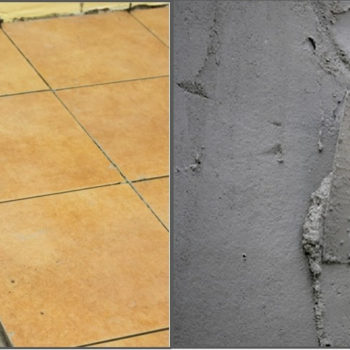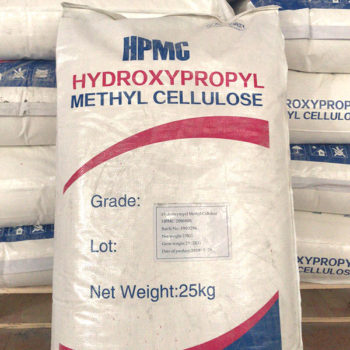Benefits of HPMC Tablet Coating in Enhancing Drug Release
HPMC Tablet Coating: The Key to Improving Drug Release
When it comes to pharmaceuticals, the effectiveness of a drug is determined not only by its active ingredients but also by how efficiently it is released into the body. This is where tablet coating plays a crucial role. One of the most widely used coating materials in the pharmaceutical industry is Hydroxypropyl Methylcellulose (HPMC). HPMC tablet coating offers numerous benefits in enhancing drug release, making it an indispensable tool for pharmaceutical manufacturers.
One of the primary advantages of HPMC tablet coating is its ability to control the release of drugs. By applying a thin layer of HPMC coating on the tablet surface, the drug release can be modified to achieve the desired therapeutic effect. This is particularly important for drugs that require a sustained release profile, where a controlled and gradual release of the active ingredient is necessary for optimal efficacy. HPMC coating acts as a barrier, preventing the drug from being released too quickly and ensuring a steady release over an extended period of time.
Furthermore, HPMC tablet coating can improve the stability of drugs. Some active ingredients are sensitive to environmental factors such as moisture, light, and temperature, which can degrade their potency. By encapsulating the drug in an HPMC coating, it is protected from these external factors, ensuring its stability throughout its shelf life. This is especially crucial for drugs that are stored for long periods or are exposed to varying environmental conditions during transportation.
In addition to controlling drug release and improving stability, HPMC tablet coating also enhances the bioavailability of drugs. Bioavailability refers to the fraction of the administered dose that reaches the systemic circulation and is available to produce a pharmacological effect. HPMC coating can improve the bioavailability of poorly soluble drugs by increasing their solubility and dissolution rate. This is achieved by creating a hydrophilic surface that promotes rapid wetting and dissolution of the drug, allowing for better absorption in the gastrointestinal tract.
Moreover, HPMC tablet coating offers excellent film-forming properties, which contribute to the overall quality of the coated tablets. The coating forms a smooth and uniform film that not only enhances the appearance of the tablet but also provides protection against mechanical damage during handling and transportation. This ensures that the tablet remains intact until it reaches the patient, guaranteeing the accurate dosage and efficacy of the drug.
Furthermore, HPMC tablet coating is compatible with a wide range of active ingredients and excipients, making it a versatile choice for pharmaceutical manufacturers. It can be easily tailored to meet specific formulation requirements, such as controlling the release rate, improving taste masking, or providing enteric protection. This flexibility allows for the development of innovative drug delivery systems that cater to the unique needs of patients.
In conclusion, HPMC tablet coating plays a vital role in enhancing drug release and improving the overall effectiveness of pharmaceuticals. Its ability to control drug release, improve stability, enhance bioavailability, and provide excellent film-forming properties makes it an indispensable tool for pharmaceutical manufacturers. With its versatility and compatibility with various active ingredients, HPMC tablet coating offers endless possibilities for the development of advanced drug delivery systems. As the pharmaceutical industry continues to evolve, HPMC tablet coating will undoubtedly remain a key component in the quest for improved drug release and patient outcomes.
Factors Affecting Drug Release in HPMC Tablet Coating
HPMC Tablet Coating: The Key to Improving Drug Release
Factors Affecting Drug Release in HPMC Tablet Coating
When it comes to pharmaceutical formulations, one of the key factors that determine the effectiveness of a drug is its release rate. The rate at which a drug is released from a tablet coating can have a significant impact on its therapeutic efficacy. This is where Hydroxypropyl Methylcellulose (HPMC) tablet coating comes into play. HPMC, a cellulose derivative, is widely used in the pharmaceutical industry as a coating material due to its excellent film-forming properties and ability to control drug release.
One of the primary factors that affect drug release in HPMC tablet coating is the concentration of HPMC in the coating solution. The concentration of HPMC determines the thickness of the coating and, consequently, the rate at which the drug is released. Higher concentrations of HPMC result in thicker coatings, which can slow down drug release. On the other hand, lower concentrations of HPMC lead to thinner coatings and faster drug release. Therefore, finding the optimal concentration of HPMC is crucial to achieving the desired drug release profile.
Another factor that influences drug release in HPMC tablet coating is the molecular weight of HPMC. The molecular weight of HPMC affects the viscosity of the coating solution, which in turn affects the film-forming ability of HPMC. Higher molecular weight HPMC tends to have higher viscosity, resulting in thicker coatings and slower drug release. Conversely, lower molecular weight HPMC has lower viscosity, leading to thinner coatings and faster drug release. Therefore, selecting the appropriate molecular weight of HPMC is essential in controlling drug release.
The type and amount of plasticizer used in the HPMC tablet coating formulation also play a significant role in drug release. Plasticizers are added to improve the flexibility and durability of the coating film. They reduce the brittleness of the film and enhance its adhesion to the tablet surface. However, the choice and concentration of plasticizer can affect drug release. Certain plasticizers, such as polyethylene glycol (PEG), can increase the permeability of the coating, resulting in faster drug release. On the other hand, other plasticizers, such as triethyl citrate (TEC), can decrease the permeability of the coating, leading to slower drug release. Therefore, careful selection and optimization of the plasticizer are necessary to achieve the desired drug release profile.
In addition to the formulation factors, the coating process parameters also influence drug release in HPMC tablet coating. The coating process involves spraying the coating solution onto the tablets and drying them to form a solid film. The spraying rate, drying temperature, and drying time can all affect the thickness and uniformity of the coating, thereby impacting drug release. Higher spraying rates and longer drying times tend to result in thicker coatings and slower drug release. Conversely, lower spraying rates and shorter drying times lead to thinner coatings and faster drug release. Therefore, optimizing the coating process parameters is crucial in achieving the desired drug release profile.
In conclusion, HPMC tablet coating is a versatile and effective method for controlling drug release in pharmaceutical formulations. Several factors, including the concentration and molecular weight of HPMC, the type and amount of plasticizer, and the coating process parameters, influence drug release in HPMC tablet coating. By carefully selecting and optimizing these factors, pharmaceutical manufacturers can achieve the desired drug release profile and enhance the therapeutic efficacy of their products.
Techniques for Optimizing Drug Release in HPMC Tablet Coating
HPMC Tablet Coating: The Key to Improving Drug Release
Techniques for Optimizing Drug Release in HPMC Tablet Coating
In the world of pharmaceuticals, drug release is a critical factor that determines the effectiveness of a medication. The ability of a drug to be released in a controlled and predictable manner is essential for achieving the desired therapeutic effect. One technique that has gained significant attention in recent years for optimizing drug release is the use of Hydroxypropyl Methylcellulose (HPMC) tablet coating.
HPMC is a cellulose-based polymer that is widely used in the pharmaceutical industry for its excellent film-forming properties. When applied as a coating on tablets, HPMC forms a protective barrier that controls the release of the drug. This allows for a more precise and consistent drug release profile, leading to improved therapeutic outcomes.
One of the key advantages of HPMC tablet coating is its ability to modulate drug release rates. By adjusting the concentration of HPMC in the coating formulation, pharmaceutical manufacturers can control the rate at which the drug is released. This is particularly useful for drugs that require a sustained release profile, where a constant and controlled release of the drug is desired over an extended period of time. HPMC coatings can be tailored to release the drug at a predetermined rate, ensuring that the therapeutic effect is maintained for the desired duration.
Another technique for optimizing drug release in HPMC tablet coating is the use of plasticizers. Plasticizers are additives that improve the flexibility and elasticity of the HPMC film. By incorporating plasticizers into the coating formulation, the film becomes more permeable, allowing for faster drug release. This is especially beneficial for drugs that require immediate release, where a rapid onset of action is desired. The addition of plasticizers can enhance the dissolution of the drug, leading to faster and more efficient drug delivery.
In addition to modulating drug release rates, HPMC tablet coating can also protect the drug from degradation. Some drugs are sensitive to environmental factors such as moisture, light, and oxygen, which can degrade their potency over time. HPMC coatings act as a barrier, shielding the drug from these external factors and preserving its stability. This is particularly important for drugs that have a long shelf life or are intended for use in challenging environmental conditions. By protecting the drug from degradation, HPMC tablet coating ensures that the medication remains effective and safe for consumption.
Furthermore, HPMC tablet coating offers improved patient compliance. Coated tablets are generally easier to swallow and have a smoother texture compared to uncoated tablets. This makes them more comfortable to take, especially for patients who have difficulty swallowing or experience gastrointestinal discomfort. The improved palatability of coated tablets can enhance patient adherence to medication regimens, leading to better treatment outcomes.
In conclusion, HPMC tablet coating is a valuable technique for optimizing drug release in the pharmaceutical industry. Its ability to modulate drug release rates, protect the drug from degradation, and improve patient compliance makes it an attractive option for pharmaceutical manufacturers. By utilizing HPMC tablet coating, pharmaceutical companies can ensure that their medications are delivered in a controlled and predictable manner, ultimately improving the therapeutic efficacy of their products.
Q&A
1. What is HPMC tablet coating?
HPMC tablet coating refers to the application of a thin layer of hydroxypropyl methylcellulose (HPMC) onto pharmaceutical tablets to improve drug release and protect the tablet from environmental factors.
2. How does HPMC tablet coating improve drug release?
HPMC tablet coating acts as a barrier that controls the release of the drug from the tablet. It can delay drug release, provide sustained release, or target specific sites in the body for drug delivery.
3. What are the benefits of using HPMC tablet coating?
Using HPMC tablet coating offers several advantages, including improved drug stability, enhanced bioavailability, controlled drug release, protection against moisture and light, and improved patient compliance.


